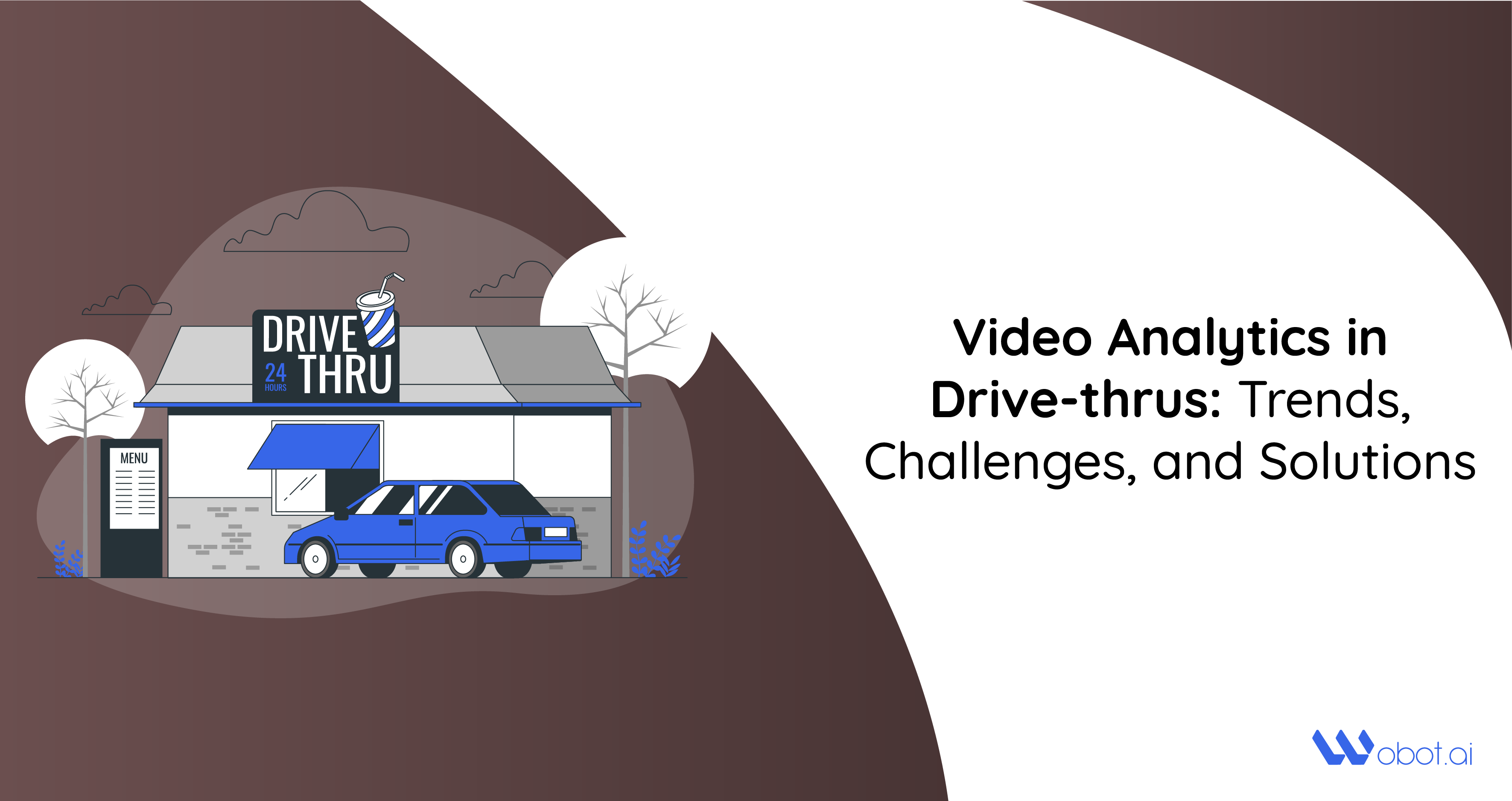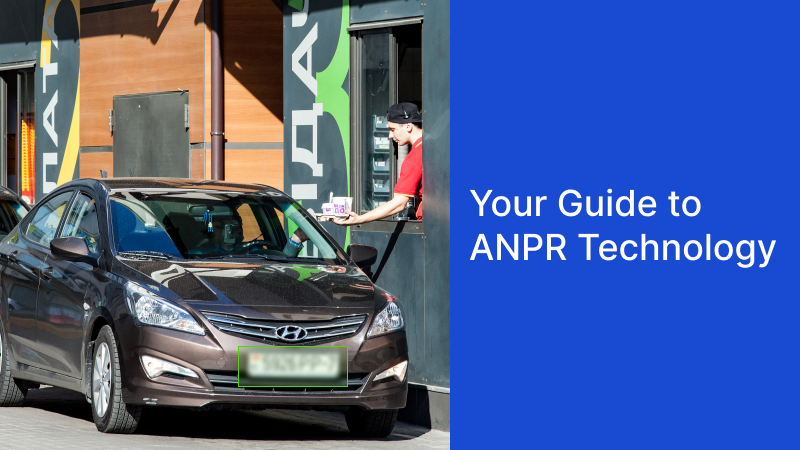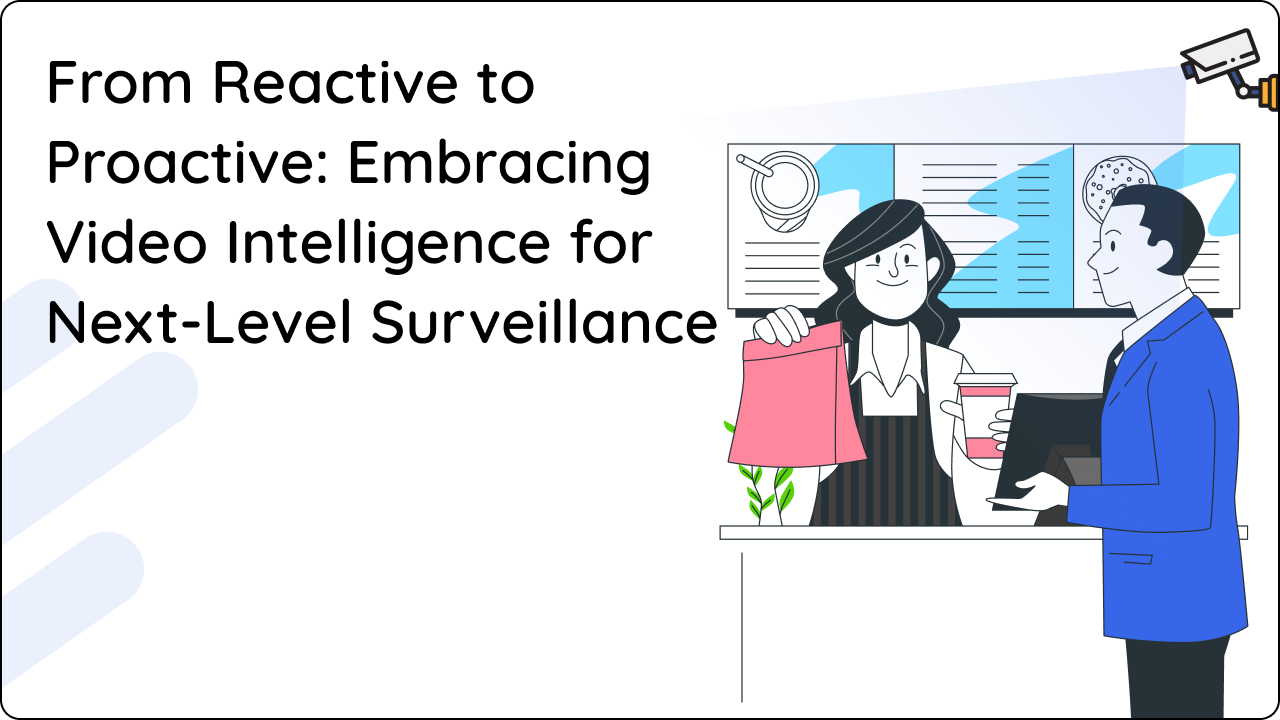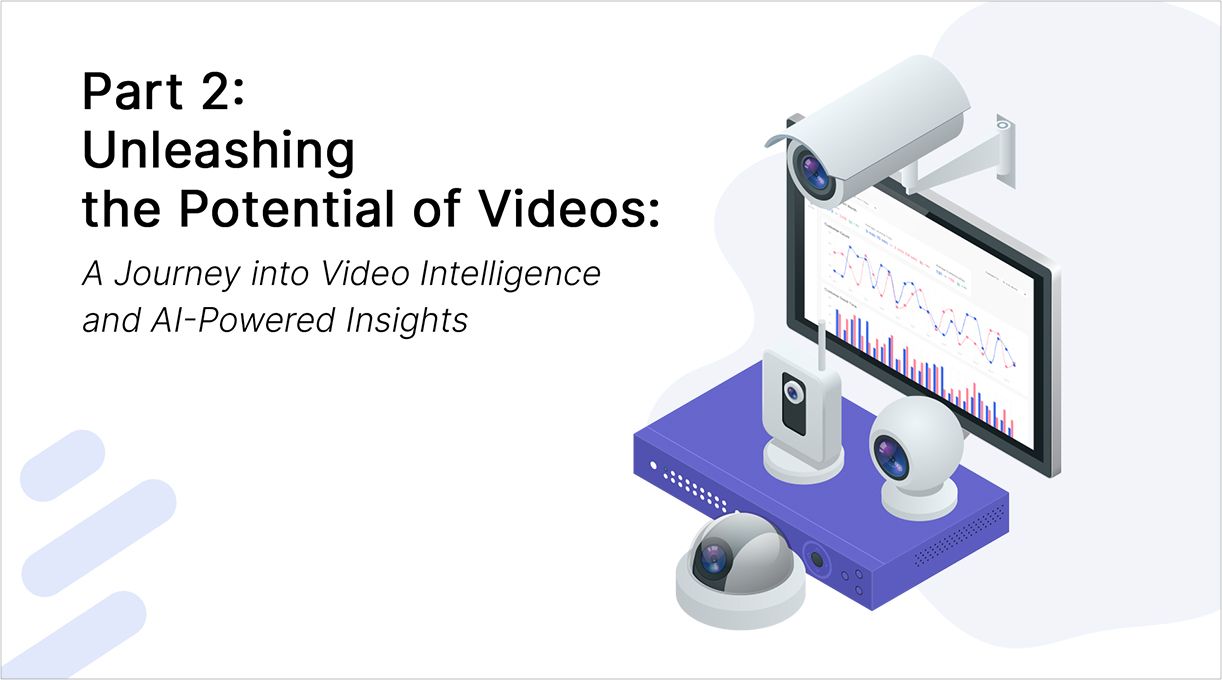Technology for F&B Businesses: The Sweet Pill to Combat Everyday Challenges
Written by Team Wobot
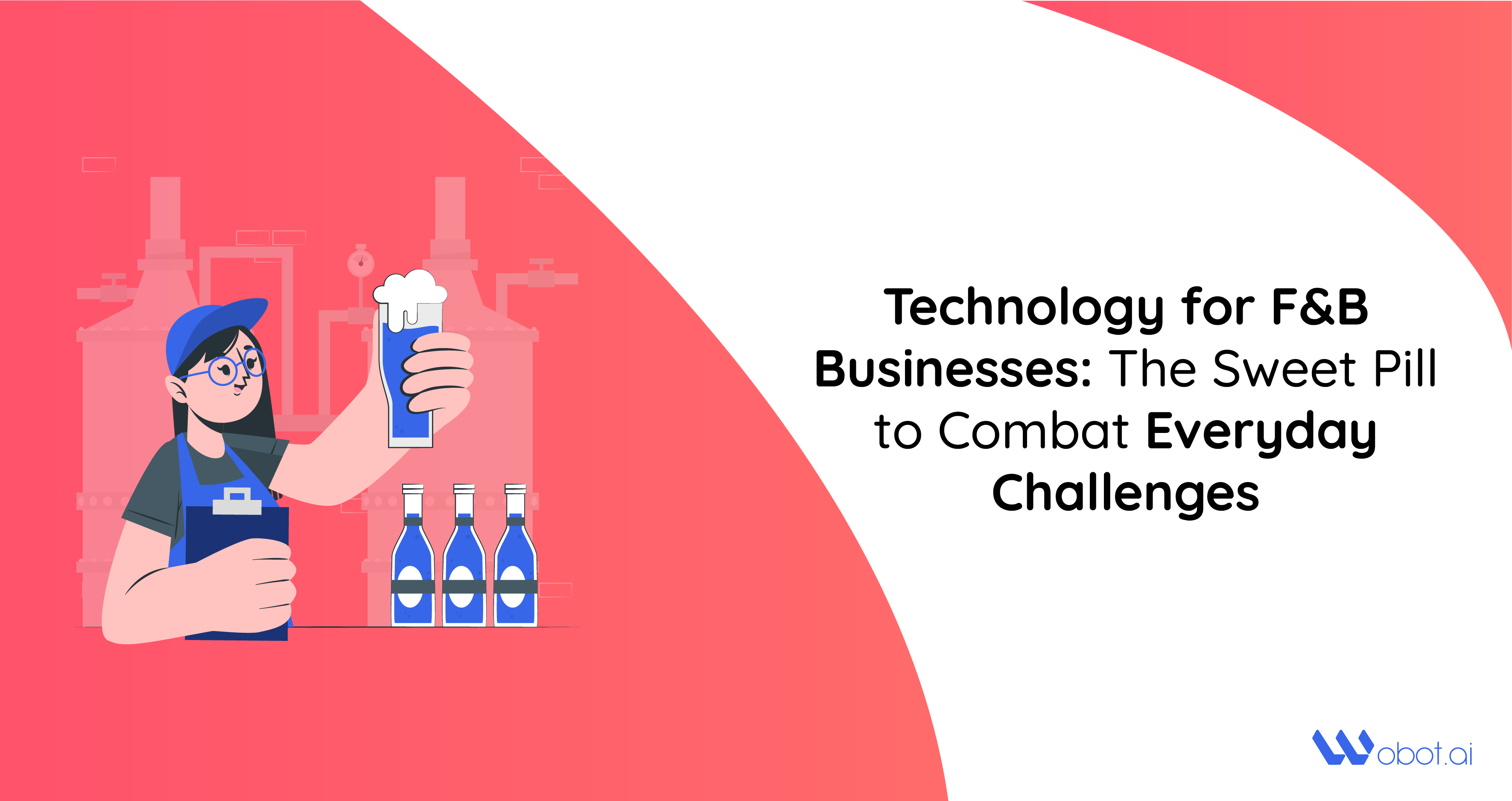
The food and beverage industry has a significant role to play in the landscape of the US economy. It accounts for approximately 5% of the country’s total GDP and 10% of its total employment rate. The US food value chain is so robust that it transforms raw farm communities from over 2 million farms into the final consumer food and beverage products, which are further distributed through approximately 680,000 retail and foodservice outlets across the country!
With reference to these numbers, it can be concluded that the US food and beverage industry operates on a mass level. However, this huge industry also suffers from several massive challenges, not to mention, the impact of the Covid-19 pandemic that has turned everything upside down in many segments poses equally challenging issues on the food industry.
In this blog, we will talk extensively about these challenges and how business owners can overcome them with the help of technology that has a significant role to play here. We will also talk about other possible solutions that can be considered to deal with the current issues and other general problems that the US food and beverage industry face on various levels.
Let’s begin!
What are the biggest challenges for the US food and beverages industry?
The food and beverage industry in the US is a robust setup that deals with all kinds of changes from time to time. However, despite the downsides of the recent global economic recession, experts believe that the food and beverage industry is among the selected consumer product sectors that are likely to grow in the coming years. But the road to progress is not as smooth as it seems. The food industry still needs to recover from the downsides of the pandemic and other common challenges that it faces in managing its systems and meeting consumer trends.
Here are the biggest and most common challenges that the US food and beverage industry faces –
1. Impact of The Covid-19 Pandemic
The US food industry has been presented with multifaceted challenges as the pandemic continues to disrupt the entire working system. Among all other challenges, maintaining hygiene and ensuring proper sanitization compliance is the primary concern. Hence, it is a current priority to ensure that food hygiene compliance is effectively implemented and followed.
How to tackle this issue?
To ensure strict implementation of food hygiene and necessary sanitization compliance, it is imperative to check if workplace SOP is being applied effectively. Automation can play a pivotal role in elevating these safety practices and protocols. To improve workplace sanitation and hygiene at your workplace and keep it from the spread of Covid-19, it would be effective to implement an AI-enabled video analytics platform. These automated real-time analytics will ensure compliance with all hygiene and food safety SOP by making sure that the concerned safety measures are being implemented correctly and consistently in the workplace.
For instance, if your employees or workers do not follow the social distancing compliance at the workplace, a video analytics platform will ensure compliance with the Covid-19 guidelines. It will help to take immediate measures to ensure that non-compliance does not happen again in the future. Similarly, for a food outlet that also provides food delivery service to its customers, it is essential to follow the Covid-19 guidelines and ensure that their delivery agents are properly sanitized to prevent contamination in between deliveries. Here, a video analytics platform can provide insights into the violation and help to ensure compliance with the sanitization guidelines.
2. Improving supply chain visibility
For any business to run smoothly, it is important to know where the suppliers and sub-suppliers are located while being aware of the critical dependencies in extended supply chains. Especially after the impact of the covid-19 lockdown, it has become increasingly apparent as food businesses look forward to restarting their production.
As a result of this vagueness, lack of visibility in the supply chain has become a common issue as it becomes difficult to track raw materials and components from the original suppliers.
How to tackle this issue?
Taking into consideration the complexity of supply chains, there are various steps that an organization can take to achieve the desired visibility in its supply chain.
- Getting detailed and real-time insights on shipment status and maintaining a track record of the original suppliers for a selected category of raw materials.
- Regularly assess your training programs to identify efficiency issues. Particularly with food businesses that invest in in-house training programs, it often becomes a matter of hassle to ensure that all the materials and procedures equipped in these programs are up-to-date and productivity-oriented. An assessment of these procedures will help to assess supply chain morales that may have promoted unachievable goals influencing the hard labor that went into your product or service.
3. Management of food loss and wastage
From grocery stores to restaurants, getting better food-waste management is one of the biggest challenges of all time for food businesses. It is a multifaceted challenge that any food business can be prone to. No wonder why 50% of all the US produce gets wasted instead of getting consumed.
Food loss and waste are likely to occur at any stage of the food value chain from processing to final consumption. This complexity makes food waste management a key priority to avoid, reduce, and recycle waste through the consumption and production chain.
How to tackle this issue?
Since food wastage and loss is a multidimensional problem that can occur at any stage of the supply chain, the solution needs to be equally functional and diverse. Manufacturers and food service providers often lose out on potential revenue because a significant amount of produced food gets wasted.
- One way to combat this challenge is to reduce manual handling. To achieve this, implementing AI-powered checklists backed with a smart video analytics platform can aid in managing and reducing potential food wastage. It will help to keep an eye on any activity that can lead to food wastage or contamination for a given use case.
- Food businesses can also cut off food loss and waste by adopting advanced food-management tools with imagining technology that evaluates food quality. These tools assess the freshness of food items and mark the difference between fresh and partly damaged items. In this way, wholesalers and retailers can make informed decisions on how to procure these food items based on their assessed quality.
4. Maintaining compliance with regulations
With a plethora of rules and regulations to be followed, it becomes increasingly difficult for food and beverage businesses to comply with all of these and manage their operations simultaneously. With every new standard that is set, it becomes a matter of priority for food businesses to take active steps and comply with them.
For instance, the Food Safety and Inspection Service (FSIS), had recently announced the Eggs Products Inspection Regulations final rule. It requires the food dealers who deal in egg products to be consistent with the current Hazard Analysis and Critical Control Points (HACCP) requirement in the poultry and meat products inspection regulations.
As a result of these regulations, the concerned food businesses will have to update their existing systems so that F&B businesses can comply with requirements as per the meat and poultry products inspection guidelines. Hence, it has given rise to the need for establishing effective systems that ensure regulatory compliance.
How to tackle this issue?
While there can be many alternatives to maintain effective compliance with regulations, automation can do wonders. By eliminating the downsides of manual monitoring in food businesses, you can streamline the entire compliance process.
One such solution is to set up AI-Powered checklists and a video analytics platform to ensure adherence to safety regulations. For instance, if a workplace SOP such as sanitization or turnaround time compliance for food preparatory processes is missed or done incorrectly, real-time analytics can help to bring this into knowledge and facilitate immediate corrective measures. This will enable quick decision-making and ensure that no compliance opportunity is left out.
5. Curbing rising labor costs
While a lot of operational costs are usually under control, some of these costs are always an exception. One such category is labor cost. Be it the changes in minimum wages or other external factors such as political and economical situations, there is always a possibility that it can either rise or decline.
How to tackle the issue?
While the uncertainty may continue to exist you can always take some steps to minimize the impact up to a certain extent. Here are a few solutions for the challenge –
- Implementing a video analytics platform to have real-time insights about the regulations can help with managing the increasing labor costs. It can significantly reduce the hassle of managing workplace SOPs so that labor is specifically focused on priority tasks at hand.
- Providing sufficient training to the workforce so that they know how to function efficiently.
- Keeping a regular check on machinery and their functioning to analyze if they are working efficiently.
Undoubtedly, the US food industry has been hit by the storm and it will take some time to bounce back. However, to speed up the recovery, the industry needs to accelerate its ongoing functions and look forward to the coming times.
Moreover, the challenges that the industry is currently facing should be addressed with actionable steps to initiate fast recovery. In the section below, we will take a look at how technology can play a pivotal role in dealing with these and many other current challenges.
How can automation help to adapt and improve?
Concerning the challenges that the US food industry is currently facing, there is a dire need to reconstruct and streamline every segment of the industry. Everything from food servicing to the processing industry, all food businesses need to take active steps to ensure they bounce back even stronger!
Taking this into consideration, automation is one thing that can bridge the gap between the existing situation and a better future for the US food and beverage industry.
Adapting businesses as per the digital era
The world around us is constantly changing. With each trend or challenge that takes its place, there is a parallel impact on how the US food industry functions. Therefore, matching steps with these transformations have become the need of the hour to deal with the challenges that can hinder a business from achieving its goals.
However, with the synchronization of food production and technology, the food industry can combat these challenges. For instance, AI-Based solutions such as checklists and a video analytics platform can help a business to ensure compliance with the regulatory standards and keep a check on any possible workplace hazard that can take place. Hence, an organization can achieve the optimum levels of efficiency and also maintain the recommended safety standards.
Advantages of integrating automation for the US food and beverage industry
When you incorporate technological innovations into your business, you can benefit a lot in terms of the resources that go into any new product development cycle, while facing any challenge as we discussed in the previous section. This integration of automation in your existing business operations enables you to achieve enhanced reporting capabilities for your business.
Moreover, when you integrate these smart solutions for your food business, it is not just the compliance or management efficiency goals that are achieved. The progress goes far beyond the quantitative and qualitative measures in the long run. You get an improved customer experience with improved visibility and infrastructure for your demand planning, and more informed insights into the existing setup so that you can collaborate smartly with your customers and other stakeholders.
You get an added competitive advantage over other players in the market in terms of compliance with the latest market trends that keep you ahead in the race!
The need for a smart video analytics platform
Talking about the role of artificial intelligence in the food industry, it cannot be considered completely effective without the inclusion of a video analytics platform. It is an invaluable tool that can be used to maintain food safety in any food concern, be it a grocery store, supermarket, restaurant, cafe, or any other retail foodservice outlet. Strategic news off a video analytics platform can ensure quality assurance and compliance with the regulatory standards more effectively.
Moreover, it also contributes to combating supply chain challenges for the food industry. Many stops come along the way as food moves from the processing stage to a consumer’s table. With each link carrying its unique challenges, it becomes difficult to keep a tab on every single activity that can carry a potential risk enough to put food quality into danger.
In such situations, compliance through a video analytics platform can ensure communication of real-time alerts upon the happening of any suspicious activity. These alerts can enable quick actionable steps and ensure that no compromise is made with the situation. These video analytics platforms are capable of identifying any number of anomalies, or furtive movements, therefore enabling food safety professionals to identify and investigate any potentially suspicious activity.
How Wobot.ai can help US F&B businesses in automating their SOPs!
At Wobot.ai we specialize in curating smart solutions for effective compliance and integrating them into your existing core systems.
We strongly believe in the potential of artificial intelligence and that it can transform the face of compliance with effective automation of systems, which is the need of the hour. The US food and beverage industry is currently in a recovery phase, and we believe that our smart solution can help in this process by enabling businesses to effectively manage their workplace compliance and regulatory operations.
Moreover, our AI-powered video analytic platform helps you to access real-time data for the concerned tasks and compliance to make sure that your business operations never fail to comply with the industry-specific standards and regulations. These prompt updates will enable you to make quick and informed decisions so that you can initiate immediate actions as and when needed.
Now streamline your workplace compliance with the power of automation and elevate the quality of your business operations like never before!
Get ready for some interesting insights on “How Drive-thrus can Leverage Video Analytics” with our next blog.
Learn to identify, analyze and mitigate process deviations in real-time with video intelligence.
P.S. You’re signing up for value here. No spam. No overly promotional emails.
Related Blogs
See All
